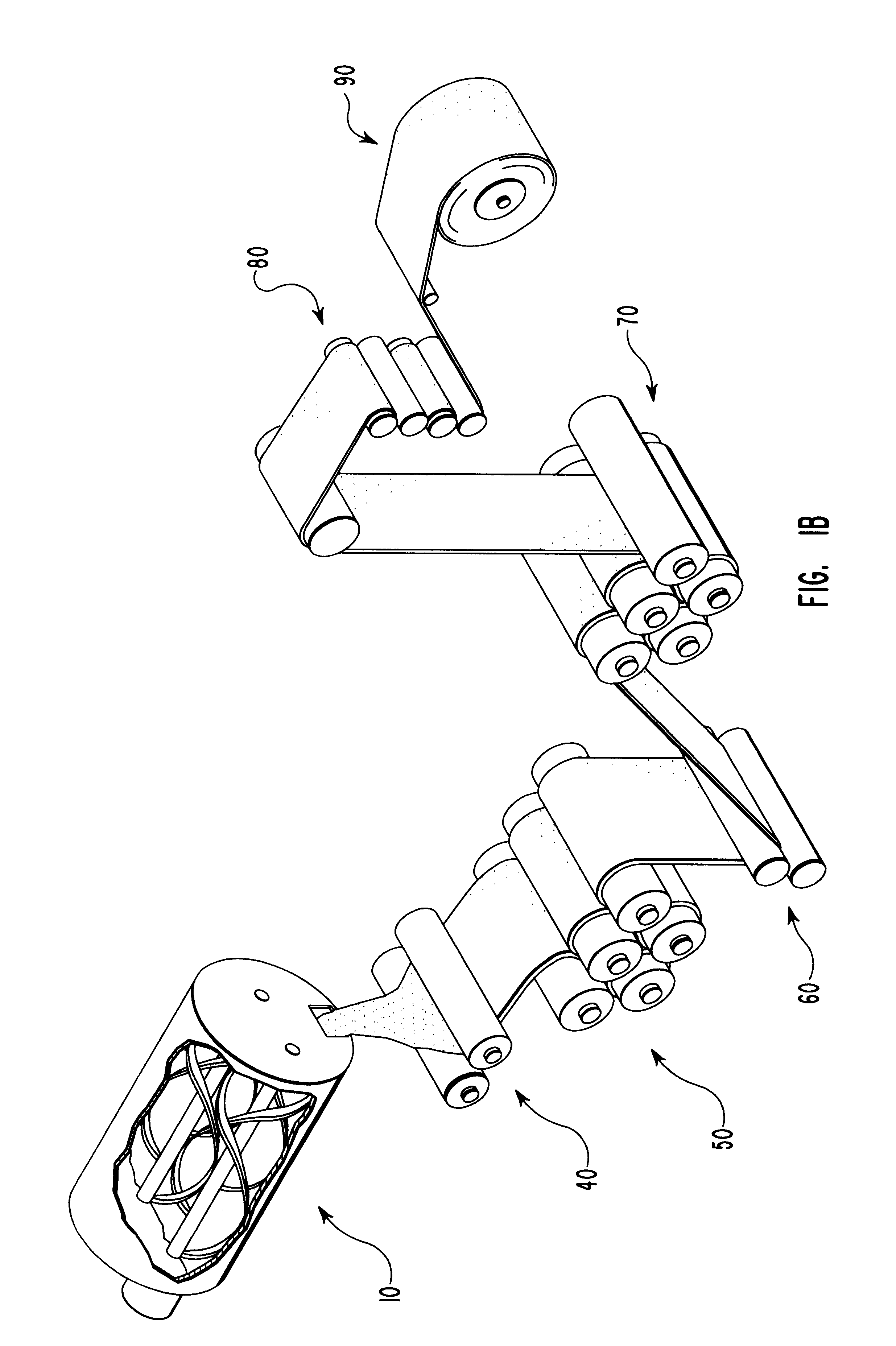Compositions and methods for manufacturing starch-based compositions
- Summary
- Abstract
- Description
- Claims
- Application Information
AI Technical Summary
Benefits of technology
Problems solved by technology
Method used
Image
Examples
example 1
Sheets with a high starch content were prepared from moldable mixtures that included the following components in the indicated amounts:
The fiber that was used in this example was southern pine and the unmodified starch was corn starch, which was ungelatinized when added to the mixture. The water, Methocel, and fibers were first mixed for 10 minutes under high shear in a Hobart kneader-mixer. Thereafter, the starch was added to the mixture, which was mixed for an additional 4 minutes under low shear.
The mixture was extruded using a deairing auger extruder through a 30 cm.times.0.6 cm die to form continuous sheets having corresponding dimensions of width and thickness. The extruded sheet was then passed between a pair of reduction rollers having a gap distance therebetween corresponding to the thickness of the sheet formed and heated to a temperature of about 70.degree. C. Thereafter, the green sheet was passed between rollers having a temperature greater than about 100.degree. C. in ...
example 2
Inorganically filled sheets having a high starch content were prepared from the following molding composition.
The water, Methocel, and southern pine fibers were first mixed for 10 minutes under high shear in a Hobart kneader-mixer. Thereafter, the calcium carbonate and corn starch were added to the mixture, which was mixed for an additional 4 minutes under low shear.
The mixture was extruded using a deairing auger extruder through a 30 cm x 0.6 cm die to form continuous sheets having corresponding dimensions of width and thickness. The extruded sheet was then passed between a pair of forming / reduction rollers having a gap distance therebetween corresponding to the thickness of the sheet formed.
Since the calcium carbonate had a low specific surface area, the mixture had a low adhesiveness to the rollers. In addition, the Methocel prevented the starch from sticking to the rollers during the sheet forming process. The roller temperatures were similar to those used in Example 1. The shee...
example 3
Inorganically filled sheets having a high starch content were prepared from the following composition.
The composition and sheets were prepared in the manner set forth in Example 2. The sheets formed in this example had thicknesses of 0.23 mm, 0.3 mm, 0.38 mm, and 0.5 mm.
PUM
| Property | Measurement | Unit |
|---|---|---|
| Length | aaaaa | aaaaa |
| Length | aaaaa | aaaaa |
| Length | aaaaa | aaaaa |
Abstract
Description
Claims
Application Information
 Login to View More
Login to View More - R&D
- Intellectual Property
- Life Sciences
- Materials
- Tech Scout
- Unparalleled Data Quality
- Higher Quality Content
- 60% Fewer Hallucinations
Browse by: Latest US Patents, China's latest patents, Technical Efficacy Thesaurus, Application Domain, Technology Topic, Popular Technical Reports.
© 2025 PatSnap. All rights reserved.Legal|Privacy policy|Modern Slavery Act Transparency Statement|Sitemap|About US| Contact US: help@patsnap.com



